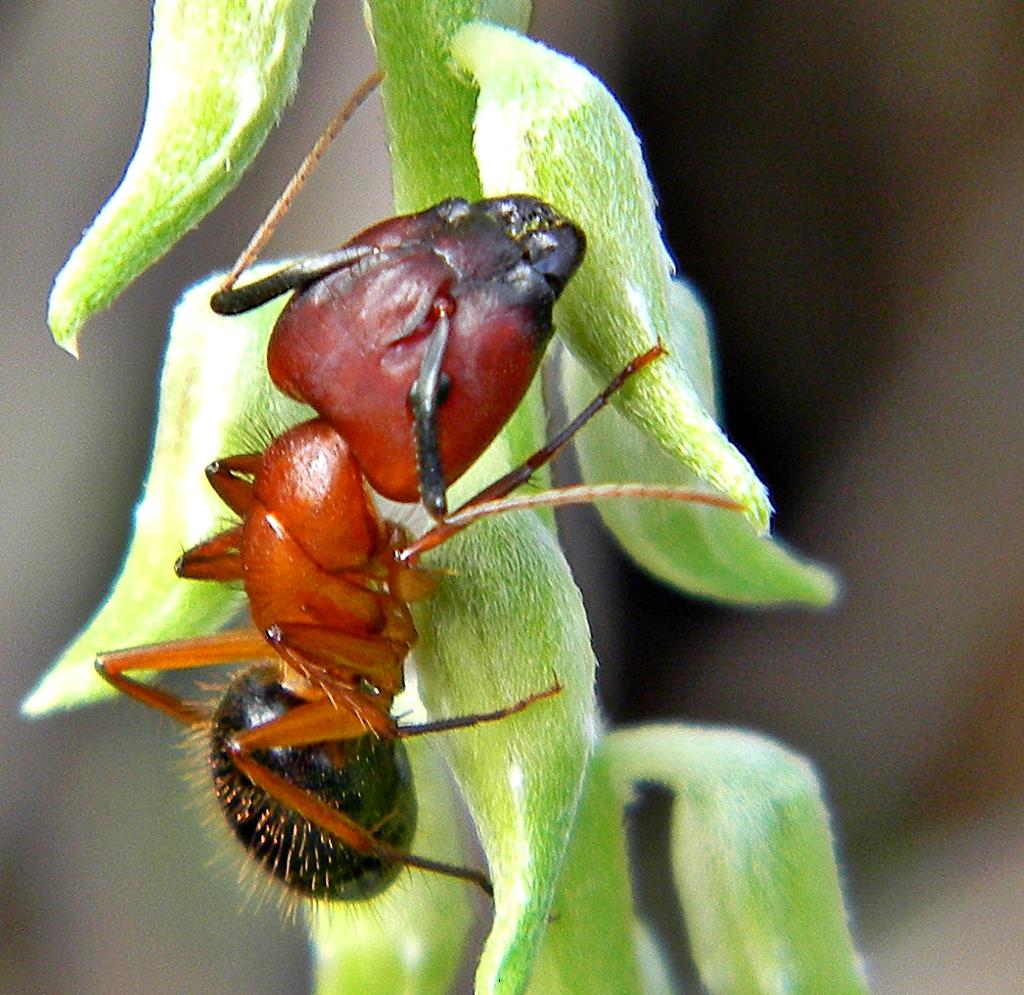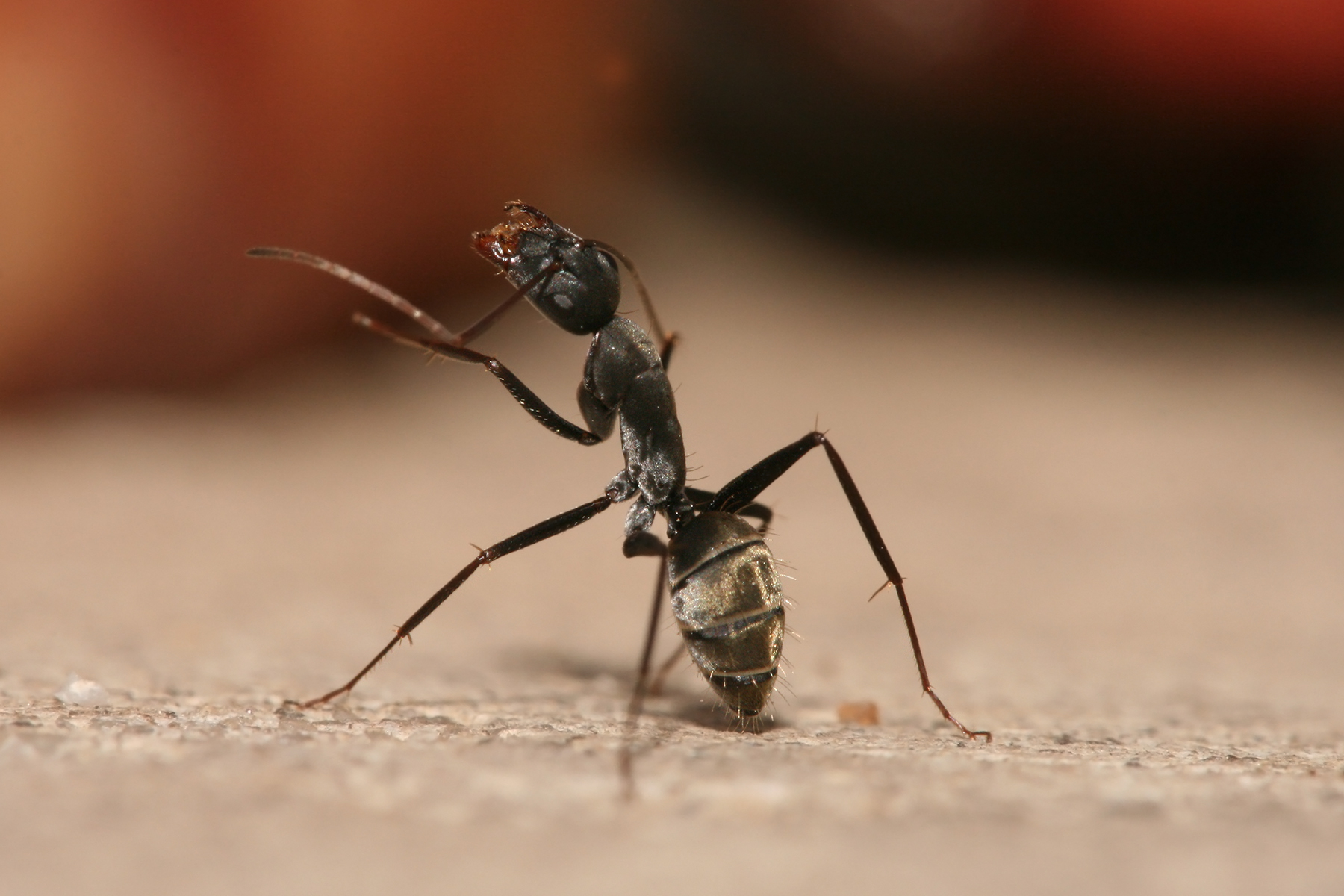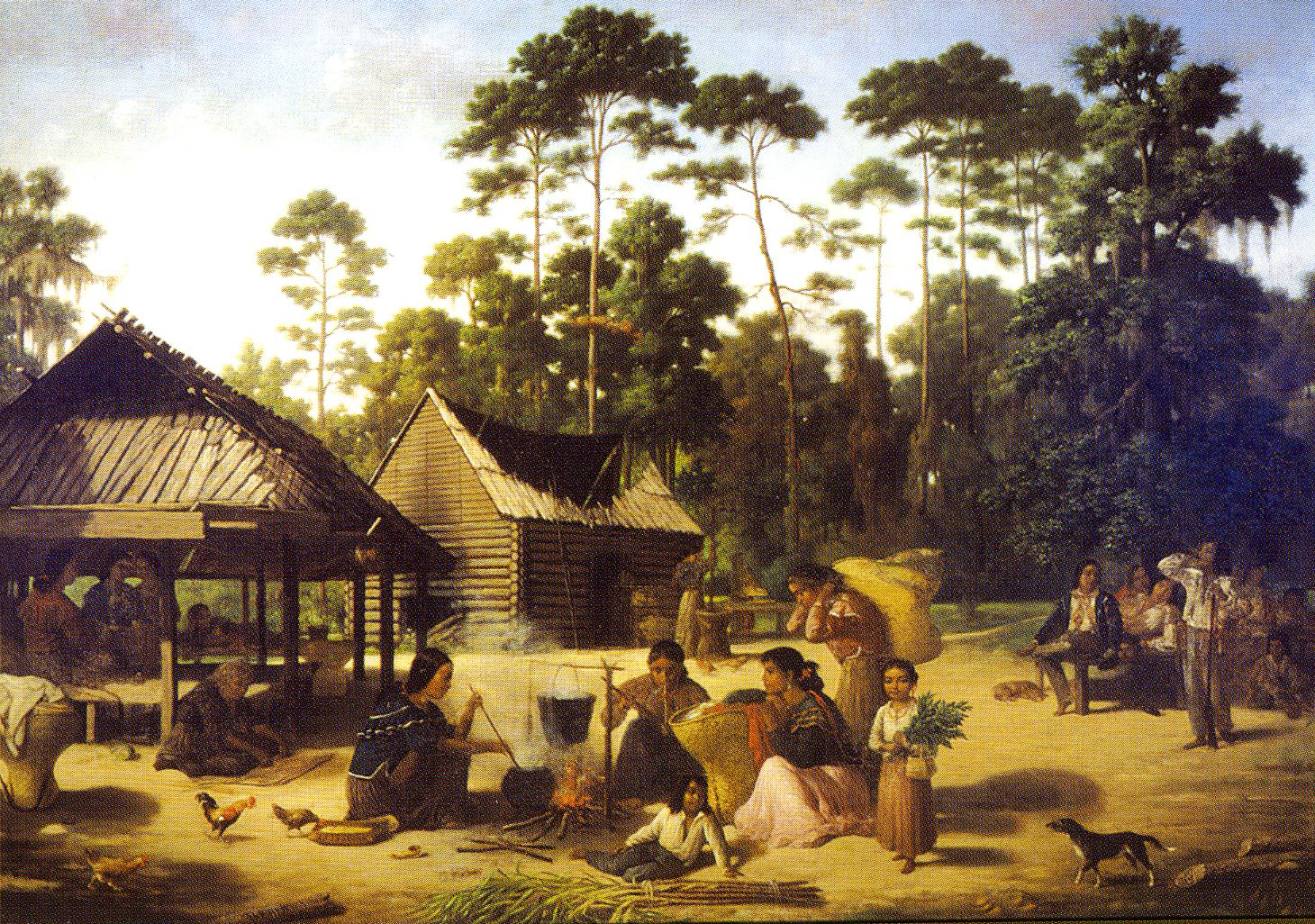|
Camponotus Floridanus
''Camponotus floridanus'', or Florida carpenter ant, is a species of ant in the genus ''Camponotus''. First described as ''Formica floridana'' by Buckley in 1866, the species was moved to ''Camponotus'' by Mayr in 1886. The ant is widespread in Florida and occurs as far north as North Carolina and as far west as Mississippi. Description ''Camponotus floridanus'' is one of the most familiar ant species in Florida owing both to its large size and conspicuous coloration. Workers and queens are bicolored, having a reddish-orange head and a bright to dullish orange colored mesosoma and legs, contrasted sharply by a deep black gaster. Male alates of this species are more concolorous, primarily ranging in the rusty to cider oranges. ''Camponotus floridanus'' can be distinguished from its visually similar, but smaller relative '' Camponotus tortuganus'' by its wider than long head, smaller but stockier legs relative to the body, and overall stouter build. Queens on average vary 14� ... [...More Info...] [...Related Items...] OR: [Wikipedia] [Google] [Baidu] |
Camponotus
Carpenter ants (''Camponotus'' spp.) are a genus of large ants (workers ) indigenous to many parts of the world. True carpenter ants build nests inside wood, consisting of galleries chewed out with their mandibles or jaws, preferably in dead, damp wood. However, unlike termites, they do not consume wood, but instead discard a material that resembles sawdust outside their nest. Sometimes, carpenter ants hollow out sections of trees. They also commonly infest wooden buildings and structures, causing a widespread problem: they are a major cause of structural damage. Nevertheless, their ability to excavate wood helps in forest decomposition. The genus includes over 1,000 species. They also farm aphids. In their farming, the ants protect the aphids from predators (usually other insects) while they excrete a sugary fluid called honeydew, which the ants get by stroking the aphids with their antennae. Description Carpenter ants are generally large ants: workers are usually 4–7&nb ... [...More Info...] [...Related Items...] OR: [Wikipedia] [Google] [Baidu] |
Blochmannia
''Blochmannia'' is a genus Genus (; : genera ) is a taxonomic rank above species and below family (taxonomy), family as used in the biological classification of extant taxon, living and fossil organisms as well as Virus classification#ICTV classification, viruses. In bino ... of symbiotic bacteria found in carpenter ants (genus '' Camponotus'') and their allies in the tribe Camponotini. As of 2014, ''Blochmannia'' has been discovered in the guts of over 60 species across 6 genera within the Camponotini, and is predicted to be pervasive throughout the tribe. ''Blochmannia'' was first discovered by zoologist Friedrich Blochmann in 1887, who described "bacteria-like structures" in the ovaries and midgut of ''Camponotus ligniperdus'' in 1887. In 2000, '' Candidatus Blochmannia'' was proposed as its own genus. Biology ''Blochmannia'' bacteria are found in the midguts and ovaries of camponotine ants. Within the midgut, large numbers of ''Blochmannia'' are found in bacterioc ... [...More Info...] [...Related Items...] OR: [Wikipedia] [Google] [Baidu] |
Megaponera
''Megaponera analis'' is the sole species of the genus ''Megaponera''. They are a strictly termite-eating (termitophagous) Ponerinae, ponerine ant species widely distributed in Sub-Saharan Africa and most commonly known for their column-like raiding formation when attacking termite feeding sites. Their sophisticated raiding behaviour gave them the common name Matabele ant after the Northern Ndebele people, Matabele tribe, fierce warriors who overwhelmed various other tribes during the 1800s. With some individuals reaching up to in length, ''M. analis'' is one of the world's largest ants. In 2014, the specific name (zoology), specific name ''analis'', in Latin "anus-related", chosen by Latreille, replaced ''foetens'' "stinking", given by Johan Christian Fabricius in 1793, because Guillaume-Antoine Olivier had given the same name ''Formica foetens'' to another species in 1792. Both names allude to the fact that the mandibular gland of this ant releases dimethyl disulfide and dimet ... [...More Info...] [...Related Items...] OR: [Wikipedia] [Google] [Baidu] |
Pathogenic
In biology, a pathogen (, "suffering", "passion" and , "producer of"), in the oldest and broadest sense, is any organism or agent that can produce disease. A pathogen may also be referred to as an infectious agent, or simply a germ. The term ''pathogen'' came into use in the 1880s. Typically, the term ''pathogen'' is used to describe an ''infectious'' microorganism or agent, such as a virus, bacterium, protozoan, prion, viroid, or fungus. Small animals, such as helminths and insects, can also cause or transmit disease. However, these animals are usually referred to as parasites rather than pathogens. The scientific study of microscopic organisms, including microscopic pathogenic organisms, is called microbiology, while parasitology refers to the scientific study of parasites and the organisms that host them. There are several pathways through which pathogens can invade a host. The principal pathways have different episodic time frames, but soil has the longest or most pers ... [...More Info...] [...Related Items...] OR: [Wikipedia] [Google] [Baidu] |
Amputation
Amputation is the removal of a Limb (anatomy), limb or other body part by Physical trauma, trauma, medical illness, or surgery. As a surgical measure, it is used to control pain or a disease process in the affected limb, such as cancer, malignancy or gangrene. In some cases, it is carried out on individuals as a Preventive healthcare, preventive surgery for such problems. A special case is that of congenital amputation, a congenital disorder, where fetus, fetal limbs have been cut off by constrictive bands. In some countries, judicial amputation is currently used punishment, to punish people who commit crimes. Amputation has also been used as a tactic in war and acts of terrorism; it may also occur as a war injury. In some cultures and religions, minor amputations or mutilations are considered a ritual accomplishment. When done by a person, the person executing the amputation is an amputator. The oldest evidence of this practice comes from a skeleton found buried in Liang Tebo c ... [...More Info...] [...Related Items...] OR: [Wikipedia] [Google] [Baidu] |
Ecologists
This is a list of notable ecologists. A-D * John Aber (United States) * Aziz Ab'Saber (Brazil) * Charles Christopher Adams (United States) * Warder Clyde Allee (United States) * Herbert G. Andrewartha (Australia) * Sarah Martha Baker ( UK) * Fakhri A. Bazzaz (United States) * John Beard (UK) * William Dwight Billings (United States) * Louis Charles Birch (Australia) * Murray Bookchin (United States) * George Bornemissza (Australia) * Emma Lucy Braun (United States) * James Brown (United States) * Murray Fife Buell (United States) * Arthur Cain (United States) * Archie Fairly Carr (United States) * Rachel Carson (United States) * Jeannine Cavender-Bares (United States) * F. Stuart Chapin III (United States) * Eric Charnov (United States) * Liz Chicaje (Peru) * Frederic Clements (United States) * Barry Commoner (United States) * Henry Shoemaker Conard (United States) * Joseph H. Connell (United States) * William Skinner Cooper (United States) * Charles F ... [...More Info...] [...Related Items...] OR: [Wikipedia] [Google] [Baidu] |
Bacteriocyte
A bacteriocyte ( Greek for ''bacteria cell''), also known as a mycetocyte, is a specialized adipocyte found primarily in certain insects such as aphids, tsetse flies, German cockroaches, weevils, and ants. These cells contain endosymbiotic organisms such as bacteria and fungi, which provide essential amino acids and other chemicals to their host. Bacteriocytes may aggregate into a specialized organ called the bacteriome. Endosymbiosis with microorganisms is common in insects. More than 10% of insect species rely upon intracellular bacteria for their development and survival.Baumann P, Moran NA, Baumann L, editors. (2000) Bacteriocyte-associated endosymbionts of insects. In: Dworkin M, editor. The prokaryotes nline New York: Springer. Available: http://link.springer.de/link/service/books/10125/ . Endosymbionts and their relationships with their hosts are diverse both functionally and genetically. However, the host cell in which bacterial and fungal endosymbionts res ... [...More Info...] [...Related Items...] OR: [Wikipedia] [Google] [Baidu] |
Florida Carpenter Ant
''Camponotus floridanus'', or Florida carpenter ant, is a species of ant in the genus ''Camponotus''. First described as ''Formica floridana'' by Buckley in 1866, the species was moved to ''Camponotus'' by Mayr in 1886. The ant is widespread in Florida and occurs as far north as North Carolina and as far west as Mississippi. Description ''Camponotus floridanus'' is one of the most familiar ant species in Florida owing both to its large size and conspicuous coloration. Workers and queens are bicolored, having a reddish-orange head and a bright to dullish orange colored mesosoma and legs, contrasted sharply by a deep black gaster. Male alates of this species are more concolorous, primarily ranging in the rusty to cider oranges. ''Camponotus floridanus'' can be distinguished from its visually similar, but smaller relative '' Camponotus tortuganus'' by its wider than long head, smaller but stockier legs relative to the body, and overall stouter build. Queens on average vary 14� ... [...More Info...] [...Related Items...] OR: [Wikipedia] [Google] [Baidu] |
Formica
''Formica'' is a genus of ants of the subfamily Formicinae, including species commonly known as wood ants, mound ants, thatching ants, and field ants. ''Formica'' is the type genus of the Formicidae, and of the subfamily Formicinae. The type species of genus ''Formica'' is the European red wood ant '' Formica rufa''. Ants of this genus tend to be between 4 and 8 mm long. Ants belonging to the ''Formica'' genus possess a single knob or bump located between their thorax and abdomen. These ants primarily feed on honeydew, a sugary liquid produced by aphids. ''Formica'' ants appear to take on a shepherding role with smaller aphids, relocating them to different parts of plants to ensure a continuous food source for the aphids. By doing so, the ants can establish a relatively sustainable honeydew supply for both themselves and their colony. Etymology The genus name ''Formica'' comes directly from the Latin ''formīca'', meaning "ant". Formic acid, which is produced by thes ... [...More Info...] [...Related Items...] OR: [Wikipedia] [Google] [Baidu] |
Camponotus Tortuganus
''Camponotus tortuganus'' is a species of ant in the family Formicidae. References Further reading * tortuganus Articles created by Qbugbot Insects described in 1895 {{Formicinae-stub ... [...More Info...] [...Related Items...] OR: [Wikipedia] [Google] [Baidu] |
Mississippi
Mississippi ( ) is a U.S. state, state in the Southeastern United States, Southeastern and Deep South regions of the United States. It borders Tennessee to the north, Alabama to the east, the Gulf of Mexico to the south, Louisiana to the southwest, and Arkansas to the northwest. Mississippi's western boundary is largely defined by the Mississippi River, or its historical course. Mississippi is the List of U.S. states and territories by area, 32nd largest by area and List of U.S. states by population, 35th-most populous of the 50 U.S. states and has the lowest per-capita income. Jackson, Mississippi, Jackson is both the state's List of capitals in the United States, capital and largest city. Jackson metropolitan area, Mississippi, Greater Jackson is the state's most populous Metropolitan statistical area, metropolitan area, with a population of 591,978 2020 United States census, in 2020. Other major cities include Gulfport, Mississippi, Gulfport, Southaven, Mississippi, South ... [...More Info...] [...Related Items...] OR: [Wikipedia] [Google] [Baidu] |







